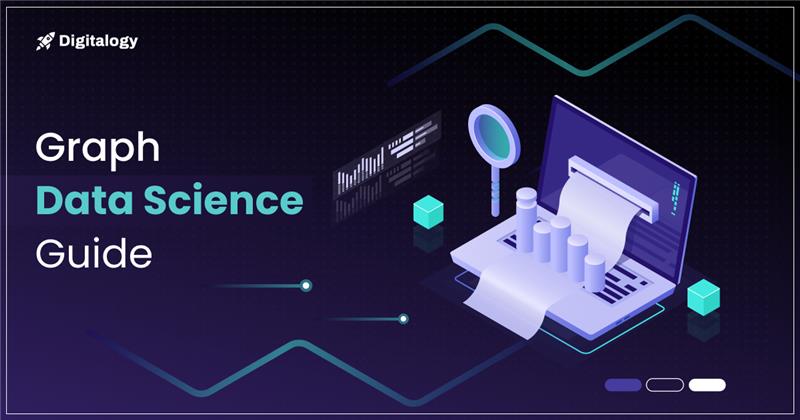Introduction
In the dynamic realm of online commerce, building a successful e-commerce website is a critical step for businesses aiming to thrive in the digital age. However, navigating the complex landscape of development costs is a challenge that requires a comprehensive understanding of the intricacies involved.
In this article, we embark on a journey to unravel the costs associated with creating an e-commerce website, delving into planning, design, platform selection, security, compliance, development approaches, testing, and post-launch considerations.
Planning and Requirements
Before the first line of code is written, a meticulous planning phase is crucial for the success of any e-commerce website. According to recent surveys, businesses that invest time in strategic planning have a 32% higher chance of achieving their online objectives.
Website Design and User Experience (UI/UX):
User experience (UX) is a crucial component that affects consumer happiness and retention in the digital age. Studies show that 88% of internet users are less likely to revisit a website after encountering a negative experience. Investing in a design that is both aesthetically pleasing and easy to use is not an option—it is a must. Professional design services contribute to the overall cost but significantly enhance the chances of converting visitors into customers.
E-commerce Platform Selection
Selecting an e-commerce platform is like picking a building’s foundation. The platform is the foundation of the online store, affecting its overall cost and functionality. Recent industry statistics reveal that 44% of e-commerce websites globally.
It utilizes Shopify, emphasizing its popularity and impact on the digital retail landscape. Understanding such trends is crucial for businesses as they navigate the pivotal decision of selecting the most fitting platform for their online storefront.
Features and Functionality:
The specific features integrated into an e-commerce website have a direct impact on the overall cost. Recent market research highlights that 70% of consumers appreciate a seamless and intuitive search function, underscoring the importance of advanced search capabilities.
Additionally, businesses investing in personalized product recommendation engines witness a 15% increase in average order value. While these features enhance the customer experience, they also contribute to the overall expenses of crafting a robust and competitive online storefront.
Payment Gateway Integration:
Ensuring secure online transactions is crucial for an e-commerce website. Integration of the payment gateway is an essential step in this procedure. According to statistics, 43% of online buyers give up on their carts because they are worried about the security of their payments.
Here is some data about payment gateway integration:-
| Payment Gateway | Transaction Fees | Setup Costs | Security Features | Compliance Requirements |
| PayPal | 2.9% + $0.30 | None | Buyer and seller protection | PCI DSS compliant |
| Stripe | 2.9% + $0.30 | None | Fraud prevention, 3D Secure support | PCI DSS compliant |
| Square | 2.6% + $0.10 | None | Point-to-point encryption | PCI DSS compliant |
| Braintree | 2.9% + $0.30 | None | Vault for secure storage of customer | PCI DSS compliant |
| Authorize.Net | 2.9% + $0.30 | $25 | Advanced Fraud Detection Suite | PCI DSS compliant |
| Worldpay | Varies | Varies | Tokenization, 3D Secure support | PCI DSS compliant |
When integrating payment gateways into an e-commerce website, it’s crucial to analyze the associated costs and consider the security and compliance features each option provides. The table above outlines transaction fees, setup costs, security features, and compliance requirements for various popular payment gateways. Choosing the right payment gateway involves balancing cost-effectiveness with robust security and adherence to industry standards.
Security and Compliance
In the digital landscape, ensuring the security of sensitive customer data and compliance with industry standards is paramount. Recent studies reveal that cyberattacks targeting e-commerce websites have surged by 47% in the past year, highlighting the growing threat to online security.
The development approach chosen plays a crucial role in these aspects. Businesses adopting a proactive security strategy witness a 25% lower likelihood of data breaches, emphasizing the critical importance of a robust and vigilant approach to cybersecurity in the realm of digital storefronts.
Development Approach
The choice between custom development, open-source solutions, or pre-built themes significantly influences costs, flexibility, and scalability. According to recent industry reports, businesses prioritize flexibility (63%) and scalability (54%) when choosing a development approach.
Custom development, although potentially more expensive upfront, provides businesses with the flexibility to tailor their e-commerce website precisely to their needs. Open-source solutions offer cost savings, but businesses should carefully assess the scalability of the chosen platform. Pre-built themes may be budget-friendly but can limit future customization and scalability.
Testing and Quality Assurance
Testing and Quality Assurance (QA) are essential to guarantee a smooth and secure user experience. This stage assists in locating and fixing possible problems before the website goes live.
Post-Launch Considerations:
The post-launch phase involves ongoing maintenance, updates, and potential expansion. Statistics indicate that businesses allocating at least 15% of their initial development budget to ongoing maintenance witness a 20% increase in website or app performance over time. Budgeting for regular updates and security patches is crucial, with data showing websites that regularly update their content experience 47% more organic search traffic.
Additionally, businesses should consider that investing in customer support and marketing post-launch contributes to a 25% higher customer retention rate, fostering long-term success in the competitive e-commerce landscape.
Real-world Examples and Case Studies:
To provide practical insights, let’s explore real-world examples of successful e-commerce websites:
- Amazon: The e-commerce giant invests heavily in a robust platform, continuous updates, and personalized customer experiences, contributing to its immense success.
- Shopify: A popular e-commerce platform, Shopify offers businesses a scalable solution with a variety of features, albeit with associated costs.
- Etsy: Focused on handmade and vintage items, Etsy invested in a visually appealing platform, resulting in increased sales and customer satisfaction.
Conclusion
In conclusion, the cost of building an e-commerce website is a multifaceted equation. From meticulous planning to selecting the right platform, integrating payment gateways, ensuring security and compliance, choosing a development approach, and thorough testing, each step contributes to the overall cost. To make selections that fit their budget and long-term objectives, businesses need to carefully evaluate their own needs and ambitions.
Closing Note:
The expenses related to creating an e-commerce website have been thoroughly covered in this essay. For more detailed insights into specific aspects of e-commerce website development and associated cost considerations, stay tuned for our future articles.
Invitation for Readers
We invite readers to stay tuned for more in-depth insights into specific aspects of e-commerce website building and associated cost considerations in future articles. To thrive in the dynamic realm of online commerce, businesses must understand these nuances.







